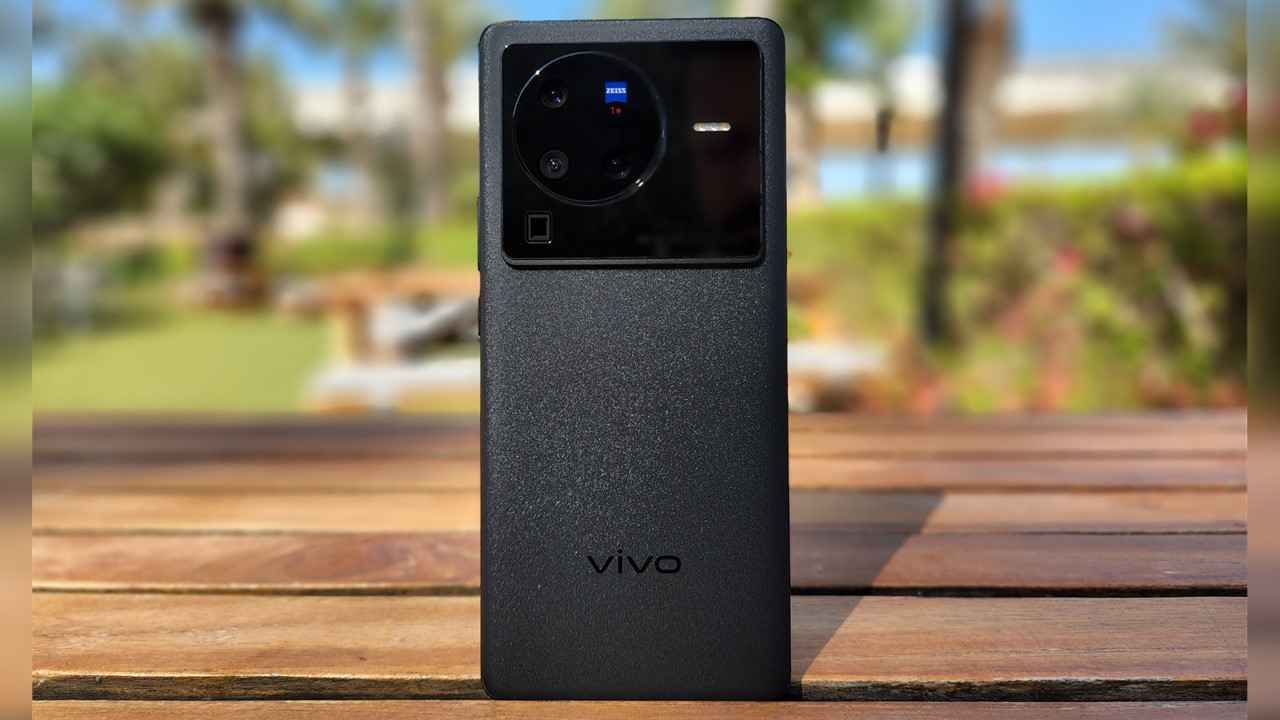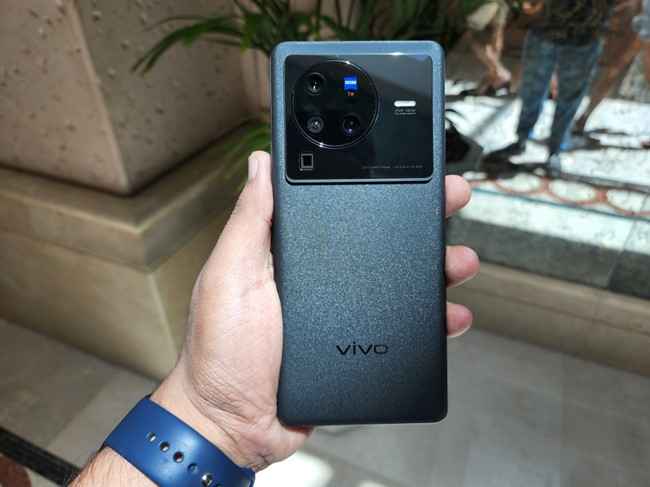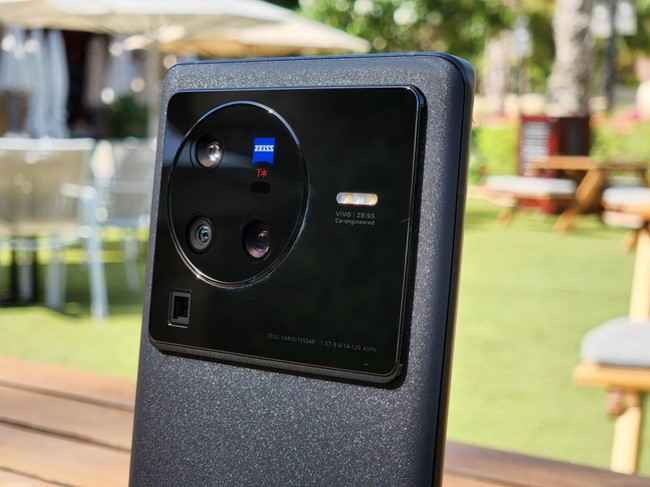Vivo X80 Pro Review : In a class of its own

- Versatile cameras with impressive performance, Unparalleled camera stabilisation system, Powerful and balanced performance, Bright and vivid display for daily use, Decent battery life, Slim and strong build, Value for money
- Funtouch OS is loaded with bloatware, UI needs refinements
The Vivo X80 Pro is at the pinnacle of the Vivo-Zeiss partnership and brings a host of camera and video-centric features that are functional and make it an all-around package for those looking for a dedicated camera phone in the Android ecosystem. The camera results more than speak for themselves and there’s really nothing that can match the versatility that Vivo is offering with the X80 Pro. It works perfectly as a point and shoot camera but at the same time also gives you a space to go out and be creative.
The Vivo X80 Pro is a spiritual successor to the Vivo X70 Pro+ from last year as it gets all the major flagship features that you expect from a top-tier flagship device and moves slightly up the smartphone food chain. The X80 Pro is the fourth phone born out of the Vivo-Zeiss collaboration and brings a host of new capabilities like Cinematic mode, new LUTs, XDR photo, extreme night vision and more. Vivo has also put their proprietary V1+ chip in the X80 Pro which helps process AI-backed features and works in tandem with the Snapdragon 8 Gen 1. But has Vivo finally made a great Android cameraphone? Here’s what we found out.
Vivo X80 Pro review: In the box
In the retail box of the Vivo X80 Pro, you will find Type-C earphones, a Type-C cable, 80W fast charger, SIM ejector pin, phone case, Warranty card and a quick start guide.
Vivo X80 Pro review: Key specifications at a glance
Price: Rs 79,999 – 12GB/256GB
Display: 6.78-inch 10-bit AMOLED, QHD+ (3200×1440 pixels), 120Hz refresh rate, HDR10+, Schott Xensation UP glass protection
Thickness: 9.1mm
Weight: 219g
Platform: Qualcomm Snapdragon 8 Gen 1
RAM: 12GB LPDDR5
Built-in storage: 256GB UFS 3.1
Expandable storage: No
5G support: n1/n2/n3/n5/n7/n8/n12/n20/ n28/n38/n40/n41/n66/n77/n78
USB-C: Yes
3.5mm jack: No
OS: Funtouch OS 12 based on Android 12
Rear Camera: 50MP (f/1.6) + 8MP periscope telephoto (5x optical zoom) + 12MP telephoto (2x optical zoom), 48MP ultra-wide (114-degree FOV)
Rear Camera Video: 8K (30FPS), 4K (30/60FPS), 1080p (30/60FPS)
Front Camera: 32MP (f/2.5)
Speakers: Stereo speakers
Battery and charging: 4,700mAh, 80W wired, 50W wireless fast charging
Colours: Cosmic Black
Vivo X80 Pro review: Performance
The Vivo X80 Pro is a solid performer with improved efficiency which makes it a great daily driver. The Snapdragon 8 Gen 1 backed system is fast, smooth and can practically run any and all apps or games under the Play Store roof. While the Snapdragon 8 Gen 1 is a power-hungry chipset, Vivo has managed to offer a stable performance while keeping the thermals in check and delegating some algorithm processing to its upgraded V1+ chip. The X80 Pro doesn’t get warm to the touch like its other Snapdragon 8 Gen 1 powered counterparts even after playing games or even using the camera app for an extended duration.
When it comes to synthetic benchmarks, the X80 Pro is right up there with the best flagship phones and received commendable scores that prove its mettle against competing phones like the Samsung Galaxy S22 (review) and Apple iPhone 13 (review). While its AnTuTu score isn’t the highest as that coveted position is taken up currently by another Vivo phone, the iQOO 9 Pro (review), it still scored over 9 million points, which is great. Similarly, in other benchmarks like Geekbench, PCMark and GPU tests like 3D Mark and GFX Bench, the Vivo X80 Pro manages to hold on its own.
We played intensive games like Call of Duty Mobile, Battlegrounds Mobile India, Genshin Impact and even the latest Apex Legends Mobile on the X80 Pro and it worked flawlessly without any major frame drops or in-game jitters. All these games ran on the highest settings at 60FPS and there’s an option in the Ultra Game Mode to boost the frame rate to 90FPS via frame interpolation. Furthermore, there’s a 27-layer cooling system that keeps the heat at bay and improves the thermals of the phone. Other features like the ultrasonic fingerprint reader work well and it takes just a millisecond to unlock the phone.
Vivo X80 Pro review: Battery Life
The Vivo X80 Pro gets a bigger battery than all the previous generation models. The X80 Pro offered a day’s worth of battery life on heavy usage with the phone’s display set to QHD+ resolution and 120Hz refresh rate at all times. While every use case is different, you can expect the battery to deplete quickly if your usage involves a lot of gaming or taking pictures of videos. However, in normal use involving a bit of internet browsing, photography and watching videos, you can easily get around 6 to 7 hours of screen on time which is decent. In our video loop test, the X80 Pro managed to go on for over 16.4 hours before giving up which again is great and right up there with other flagships. In our charging tests, the X80 Pro took around 43 minutes on average to fully charge from 0-100% which isn’t the fastest but is quick enough for most users.
Vivo X80 Pro Camera Review
The X80 Pro is a phone that basks in the glory of the Vivo-Zeiss partnership and is quite versatile for casual and professional photographers alike. The camera lenses on the X80 Pro have been coated with Zeiss T* coating which is essentially a glass lens that transmits the light to the sensor without any loss of details. What this does to a picture is that it reduces glares, and ghosting and optimizes colour fringing, especially during nighttime.
In daylight, the main camera produces some awesome looking pictures and retains many details from the frame with greater colour accuracy. While the normal colour mode boosts the saturation levels and makes the result more vibrant, there’s an option to switch to Zeiss Natural Colour Mode 2.0 which brings out close-to-natural looking colours in a picture. The HDR processing is on point and you can easily get a great picture regardless of the environment. I believe that’s the main feat for Vivo with the X80 Pro, its ability to produce good-looking pictures with just a tap of a button. The main camera offers a decent shallow depth of field effect but if you go too close to the subject, only the centre remains in focus and everything else gets a bokeh effect.
In indoor lighting, the cameras can produce well-lit pictures with good details and textures. This custom GNV sensor reduces stray lights and allows the main camera to create better images and videos with accurate colour fidelity in low light scenes. While you will be able to notice an influx of noise if you go pixel-peeping, it’s still very controlled and can be fine-tuned via software updates. Then, there’s an extreme night mode for taking pictures in less than 1 lux scenes.
The telephoto lens offers great stabilization due to the presence of Gimbal stabilization which further improves hand-held performance allowing us to take sharp and just better-looking pictures and videos. In my use, I found the stabilization of the telephoto camera to work extremely well and help in creating videos. It reduces the shakes and keeps the video stable allowing you to record walkthroughs without any effort and negates bringing along a dedicated gimbal. There’s a periscope lens on the X80 Pro as well which lets you zoom into a frame and produces decent pictures but being a low-resolution sensor, it isn’t as sharp as the output from other cameras. You can get better pictures from the periscope lens if the phone is mounted on a tripod. There’s a 360-degree horizon level stabilization which ensures that the video stays upright even though the phone might rotate and stray from the horizon. This comes in handy in scenes with a lot of motion and is the equivalent of the stabilization found in action cameras like GoPro’s.
Vivo has brought the classic Zeiss anamorphic lens and cinematic bokeh effects to the X80 Pro which uses algorithms for depth mapping and recreates bokeh with an oval flare which is generally seen only on camera lenses. This along with the portrait bokeh mode with rack focus allows you to shoot entirely in cinematic style in a 2.39:1 aspect ratio. There’s AI video enhancement backed by the V1+ chip which automatically detects the scene and enhances the brightness or contrast with just a single tap.
The selfies from the X80 Pro remain close to natural after you disable the beauty mode filters and produce sharp images with accurate skin tones. Overall, the cameras on the X80 Pro are very versatile and can be used in almost any situation without the stress of missing out on any fleeting moment. While it isn’t a DSLR replacement, the cameras are right up there with the best of the best, at least on the Android side of things and the competition will have a hard time replicating what Vivo has achieved with its Zeiss collaboration.
Vivo X80 Pro review: Display
The X80 Pro features a third-generation LTPO AMOLED display which is great for watching videos and generally looks excellent in daily use. You can also select between QHD+ and FHD+ resolutions and between 60Hz or 120Hz refresh rates. There’s also an option of Smart Switch refresh rates which automatically optimizes the refresh rate between 1Hz to 120Hz based on the content being played on the phone.
The display offers sharp visuals, and accurate colours and can get really bright in normal use. Without the adaptive brightness enabled, the display was able to produce 587 nits of typical peak brightness. However, when the adaptive brightness was enabled, the brightness got upto 845 nits which is great. Most of the time though, users will prefer keeping the brightness levels to 60-70% unless of course when venturing outdoors as it also offers great sunlight legibility.
Vivo X80 Pro review: Build and Design
The Vivo X80 Pro has a premium build and a uniquely designed camera module that is an extension of the X70 Pro+. The phone is pretty thin and has a soft touch anti-glare finish on the back that keeps fingerprints and smudges at bay. Though, it does have a large profile, especially for those with small hands and weighs a bit more than the X70 Pro+, S22+ and iPhone 13, to name a few. The ergonomics are good and it didn’t take any effort to reach either the power or volume buttons. It is protected by Schott Xensation UP glass and is IP68 certified making it resistant to dust and water ingress. Nevertheless, packing everything under that hood, the X80 Pro does manage to feel every bit as premium as the competition.
Vivo X80 Pro review: Verdict
The Vivo X80 Pro is at the pinnacle of the Vivo-Zeiss partnership and brings a host of camera and video-centric features that are functional and make it an all-around package for those looking for a dedicated camera phone in the Android ecosystem. The camera results more than speak for themselves and there’s really nothing that can match the versatility that Vivo is offering with the X80 Pro. It works perfectly as a point and shoot camera but at the same time also gives you a space to try out and go creative with features like the Cinematic mode, portrait video bokeh, AI video enhancement, time-lapse, super night mode, super moon, Astro, movie LUTs and more.
It offers a significantly balanced performance than other Snapdragon 8 Gen 1 phones and is a great daily driver that you can depend on. The Funtouch OS is probably the only downside of the X80 Pro as it comes loaded with bloatware and isn’t as clean as you’d get from a OnePlus phone. Otherwise, the battery life being offered here is at par and with support for super-fast charging you can top it up in no time.
So, if you are someone who’s looking for a great camera phone, the X80 Pro will open up avenues that you likely haven’t seen on any Android phone and will let you scratch that itch of experimenting with different photography and video styles.
Vivo X80 Pro 5G Key Specs, Price and Launch Date
| Release Date: | 18-05-2022 |
| Market Status: | Launched |
Key Specifications
Screen size (in inches)
6.78
Rear Camera Megapixel
50
Battery capacity (mAh)
4700
Storage
256
Siddharth Chauhan
Siddharth reports on gadgets, technology and you will occasionally find him testing the latest smartphones at Digit. However, his love affair with tech and futurism extends way beyond, at the intersection of technology and culture. View Full Profile




